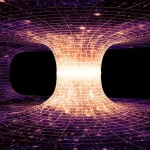Key Takeaways
- A groundbreaking study reveals that the brain operates on multiple dimensions beyond the familiar three.
- Algebraic topology, a branch of mathematics, unveils hidden geometries and spaces within brain networks.
- Neurons forming cliques generate precise geometric objects, with the clique size determining the dimension.
- Virtual and real brain tissue experiments confirm the biological relevance of multi-dimensional brain structures.
- The brain’s organized response to stimuli involves constructing and disassembling multi-dimensional “sandcastles.”
A groundbreaking study by the Blue Brain Project has unveiled astonishing insights into the brain’s complexity. By employing algebraic topology, a branch of mathematics that deals with systems of any number of dimensions, researchers have discovered that the brain operates on multiple dimensions beyond the familiar three.
Neurons in the brain form cliques, where each neuron connects to every other neuron in a specific way, giving rise to precise geometric objects. The size of the clique determines the dimension of the geometric structure, with some networks displaying structures up to eleven dimensions. This finding may explain the enigmatic nature of the brain, as traditional mathematical approaches have failed to identify these high-dimensional structures. By using algebraic topology, researchers have found hidden geometries and spaces within the brain networks, offering unprecedented insights into its architecture.
The study involved creating a digital copy of a segment of the neocortex, the most evolved part of the brain, in 2015. Applying algebraic topology to virtual brain tissue, scientists conducted numerous tests to demonstrate that the multi-dimensional brain structures observed were not random occurrences. Further experiments on real brain tissue confirmed the biological relevance of the virtual findings and suggested that the brain undergoes constant rewiring during development to incorporate as many high-dimensional structures as possible.
When presented with stimuli, the virtual brain tissue exhibited cliques of progressively higher dimensions that enclosed high-dimensional holes termed “cavities.” This organized response to stimuli indicated that the brain reacts in an intricate manner, akin to building and dismantling multi-dimensional structures like rods, planks, cubes, and more. The complexity of these “sandcastles” may determine the intricacy of tasks the brain can perform, posing intriguing questions about memory storage in high-dimensional cavities.
The discovery of multi-dimensional geometries within the brain networks opens up new avenues for understanding brain function and may hold the key to unraveling some of the most profound mysteries of the human mind.
Read full article on Frontiers


